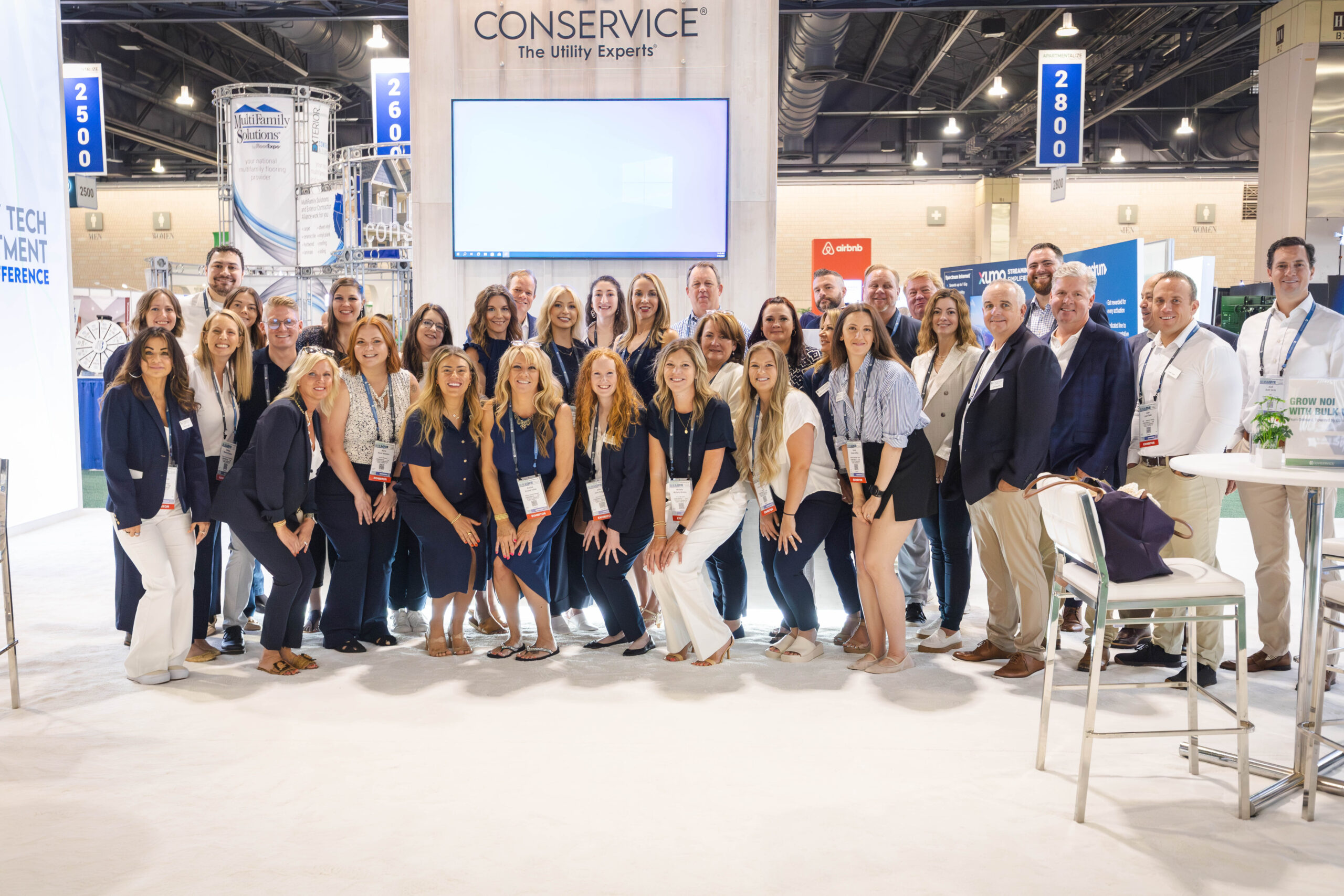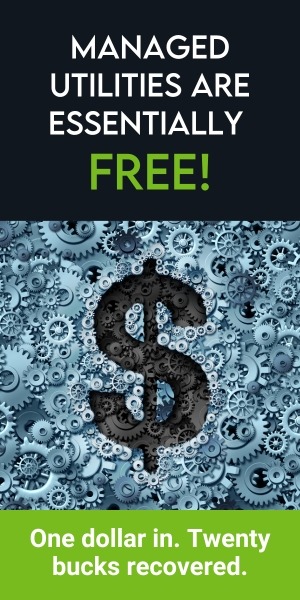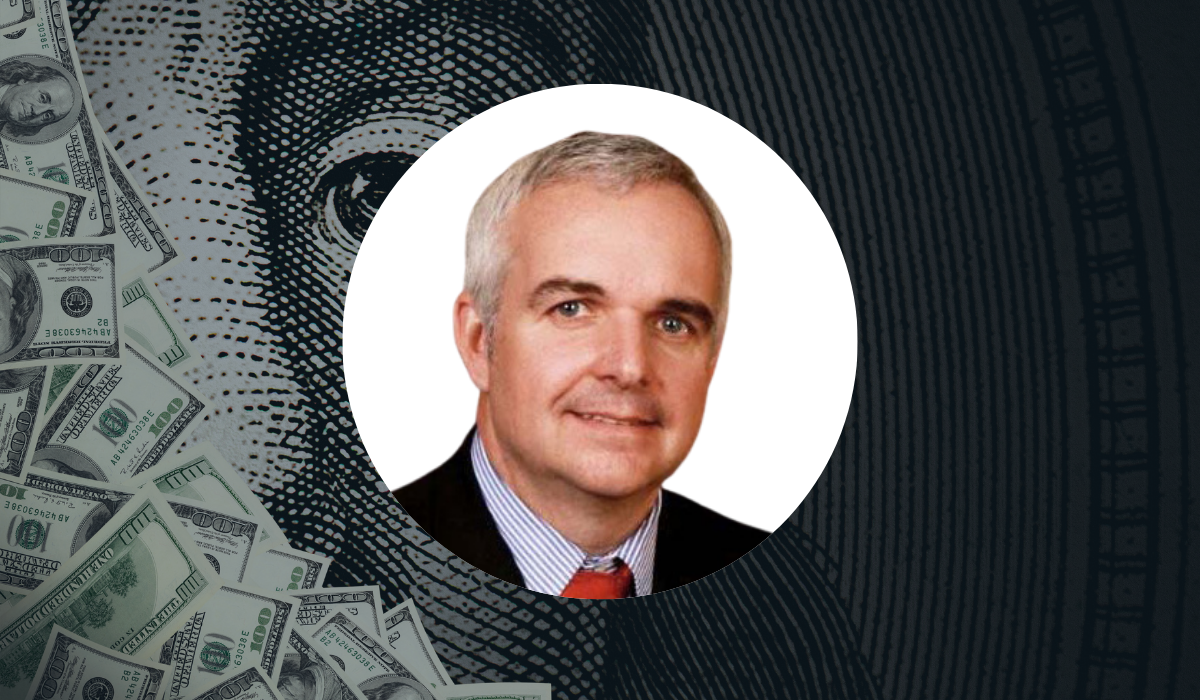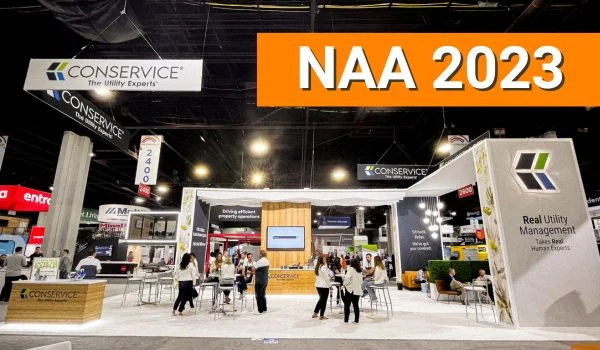Two feet into any NAA Apartementalize conference, and you begin to appreciate the SCALE of the multifamily industry. Dozens of breakouts, panels, and think tanks; hundreds of vendor booths with blazing signs; and thousands of souls from all corners of the U.S.—trading their knowledge and seeking partners for whatever comes next.
Your Utility Experts were, of course, also in attendance. More attendees visited our booth and shook our hands than at any previous event. Multifamily is in a strange, twin-locked position, strangely poised between the momentum of years of unprecedented growth and the sudden stagnation induced by flat rents and emerging regulatory pressures. Many are seeking a way to build new revenue and cut costs. Many are discovering that utilities management is a clever way to do both.
All year long, we at Conservice publish and teach. Because we serve so many geographically dispersed companies—and because the companies we serve are so infrastructurally diverse, from unit count to build-to-rent to dedicated commercial real estate—we have a unique vantage point for the multifamily industry. We see and record utility trends that are otherwise missed, and share the impact of those trends in our thought leadership.
But at NAA, we listen. We send our agents to the breakouts and panel discussions. We collect the fears and predictions of the attendees we talk to. We break bread with our competitors and trade insights on the scope of the industry. And when it’s all said and done, we bring those insights together into a neatly organized listicle. So here is what we learned:
Takeaway #1: The Importance of Fee Transparency and Communicating Value
As vacancy rates remain stubbornly high across the country, all eyes are turning to resident satisfaction. Specifically, several NAA sessions touched on the rise in resident concern and awareness of fees. In one session, a RealPage census showed that 40% of residents indicated that a raise in fees would deter them from renewing their leases, and a further 35% indicated that no increases would be the most influential factor in their decision to renew. It’s a problematic trend, as rent stagnation has forced many throughout the industry to leverage fees more rigorously to combat the pressures of inflation.
Pressure on fees isn’t only coming from residents. The Biden-Harris administration has had much to say in recent months on “junk fees” in rental housing as part of their broader campaign to empower consumers and enforce higher levels of disclosure on the industries that serve them. Recent legislation aimed at eliminating junk fees is pressuring the multifamily industry to be more rigorous in their disclosure of additional fees as well as their justifications. It’s a legislative push that reflects a broader trend toward regulatory scrutiny in the housing market. Approximately 30% of jurisdictions across the U.S. have already begun restricting what rental fees are acceptable, further highlighting the urgency for property owners and managers to adapt.
The key industry takeaway? Clearly and consistently communicate the existence and purpose of the fees that drive your ancillary income. Increasingly, the most (and sometimes only) acceptable fees are the ones directly connected to services that enhance your residents’ quality of life. Whether that enhancement comes in the form of direct comforts and amenities or indirectly from better and longer lasting infrastructure or services, it’s critical that residents understand THAT and WHY they’re being charged fees in addition to their rent.
For vendors supporting the industry, the message was even clearer. Communicate the innate value of your services before discussing the potential for ancillary income benefits. Ancillary income is still critical to the multifamily industry, but more and more of the market is demanding core benefits in addition to raw profit. Whether by case study, sales pitch, testimonial, or open dialogue, you have to showcase the ways your service ultimately benefits the lives and experiences of residents if you want to keep the attention of modern owners and managers.
Takeaway #2: Rising Costs and Centralization
Several live polls indicated that talent retention and rising expenses were chief concerns for attendees. Stats collected at NAA sessions indicated that, at a high level, average expenses for operating multifamily businesses have increased by 7.1% over the last year. While that stat falls fairly well in line with general inflation, a more concerning takeaway was the much steeper 27.7% hike in average insurance costs and 12.3% increase in marketing costs. The rise in insurance premiums is having an impactful (if well-understood) impact on business growth—but the impact of marketing costs is much more subtle. In a world of higher vacancy rates and changing resident behaviors, standing out from the crowd has become crucial. When rents are flat, business growth becomes pay-to-play, and the rise in marketing costs will hurt small to medium firms the most.
Not one but two NAA panels proposed centralization as a reliable strategy toward combating rising costs. Though traditionally nebulous, centralization as a term has come to confidently refer to any partnership, strategy, or technology that consolidates labor into central offices and processes and out of onsite establishments.
Fundamentally, there were two centralization camps proposed at NAA:
- CAMP 1: TECH AND PROCESS. This approach to centralization emphasized purchasing or developing technologies to streamline services and flatten headcount. The pros of this approach? Long-term self-reliance and focused resources. The cons? Sticker shock and a longer horizon on ROI. Building or buying proprietary technology is expensive.
- CAMP 2: STRATEGIC PARTNERSHIPS. Our bias for this approach notwithstanding, this approach focuses more on building a carefully curated list of strongly integrated partners and vendors to outsource certain arms of your business (filtering residents, property maintenance, utility management, etc.) to dedicated vendors with narrow fields of focus. The pros of this approach? Specialists do what they do best while you focus on your business. The cons? Curation! You have to be very selective in your partnerships, or you risk losing your gains to the churn of poorly integrated services or unreliable vendors.
Either way, arguments in both panels insisted that establishing strong partnerships and robust automation allow property managers to offer a wider range of resident services and amenities without shouldering the full or current cost.
Takeaway #3: Building Revenue Trumps Reducing Expenses
It’s a lesson that almost every industry has to learn and relearn every time the cycle of prosperity gives way to headwinds. To drive growth, building up or creating new sources of revenue is a better long-term strategy than reducing expenses. Many of the speakers and panelists we listened to discussed the pressure that stakeholders, board of directors, and owners are putting on them to lower expenses. It’s an understandable position—cutting costs is faster and easier than branching out. But again and again, they argued that cutting costs almost always means fundamentally reducing the quality of their resident experience. The services or processes you harm to save money may very well cost you more in worse amenities, longer call times, or poorer quality in your resident vetting.
Many at NAA insisted that investing or partnering to build revenue was the wiser course. Whether a vendor could create transparently valuable and measurably dependable sources of ancillary revenue (see above) or help you better navigate expansion into new geographies or municipalities, you could achieve the same or better boosts to your bottom line without sacrificing your residents’ quality of life.
It was, for us from Conservice in attendance, the fundamental takeaways were validating. We’ve been ringing the bell and singing the song of “centralize utilities, create better resident experiences, build ancillary income” for over two decades. And while it was a pleasant tune when times were good, our core message has become a cornerstone of good strategy and growth mindsets for a multifamily industry that is navigating a harsher economy.
Learn more about dedicated utility management support here!







